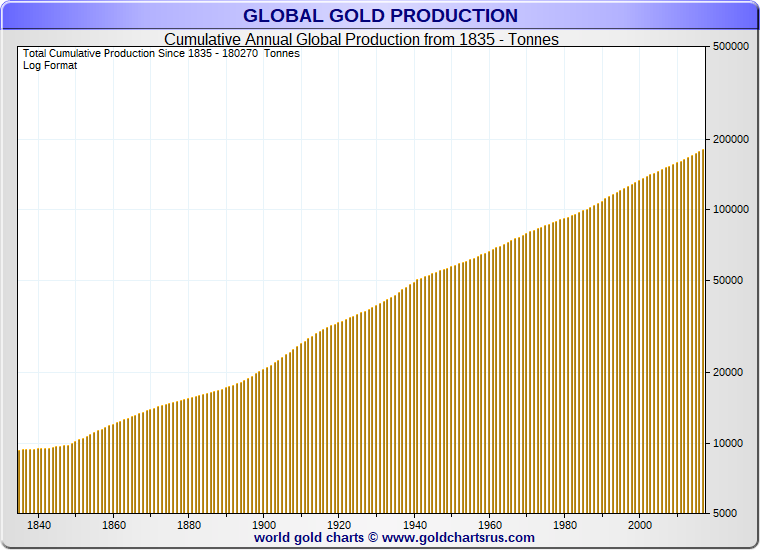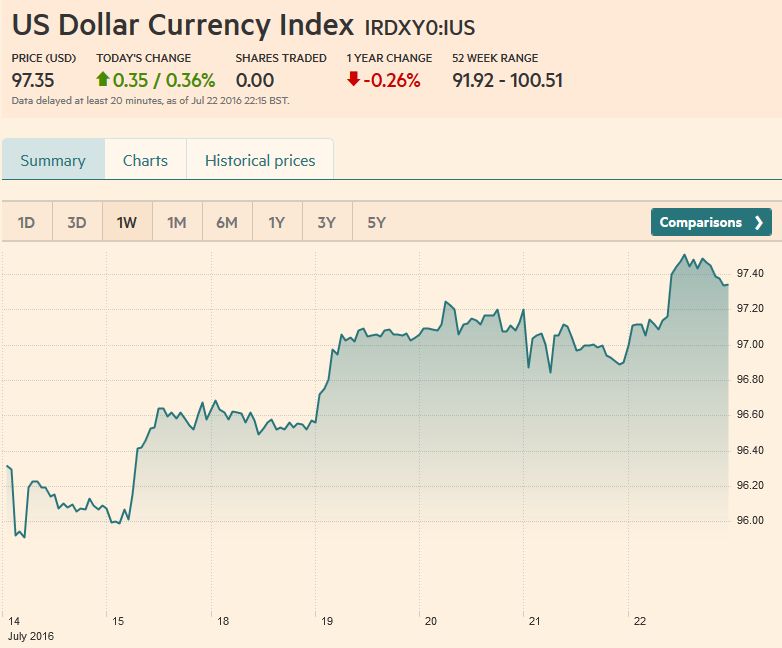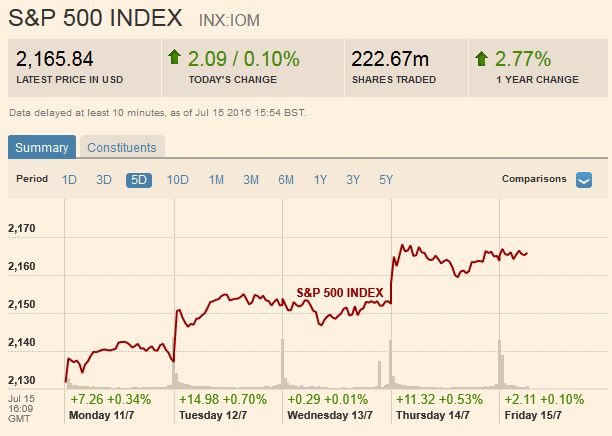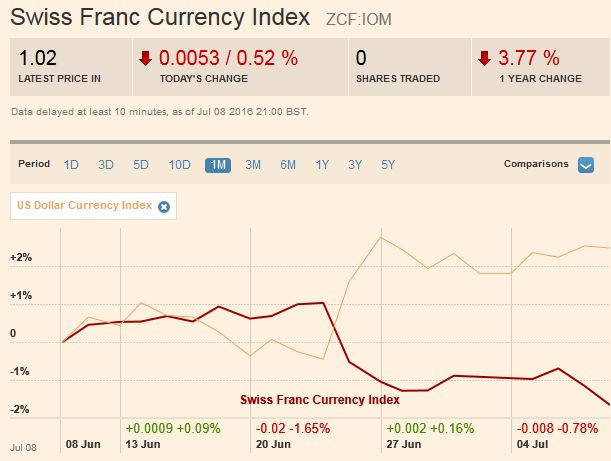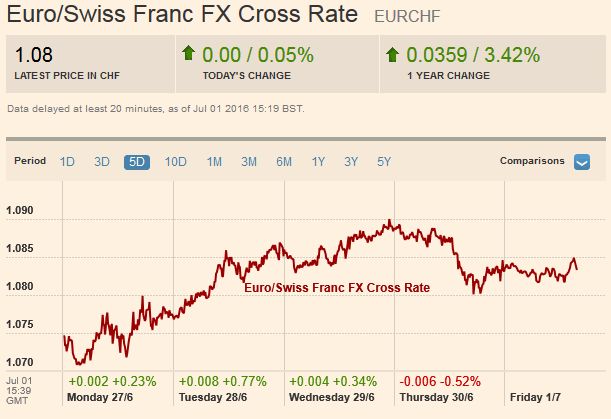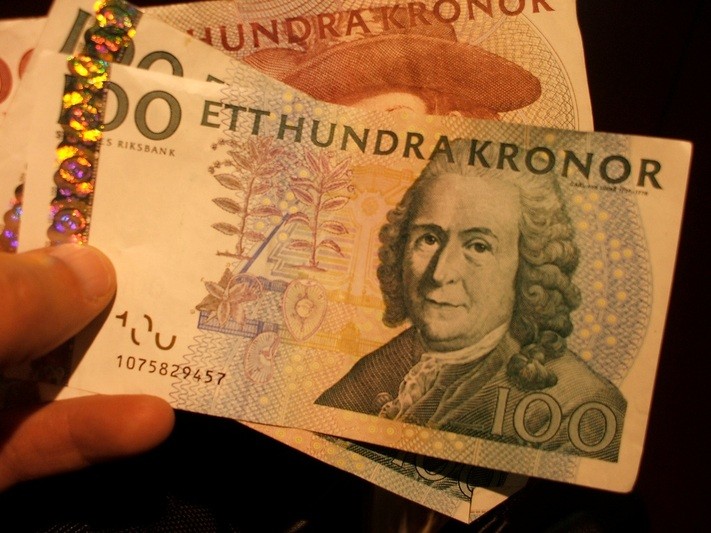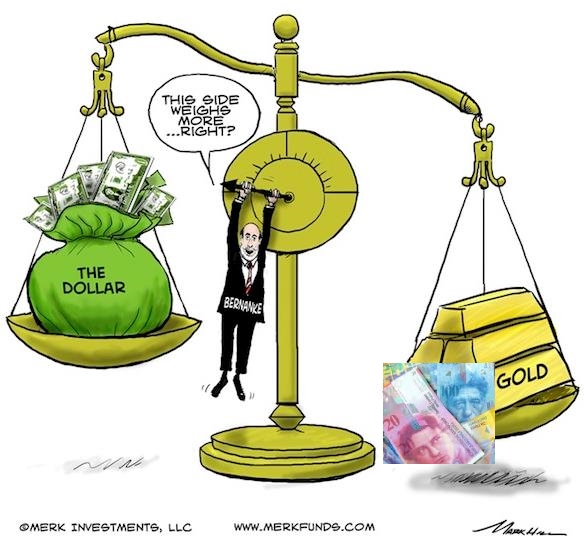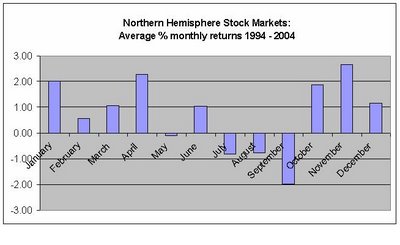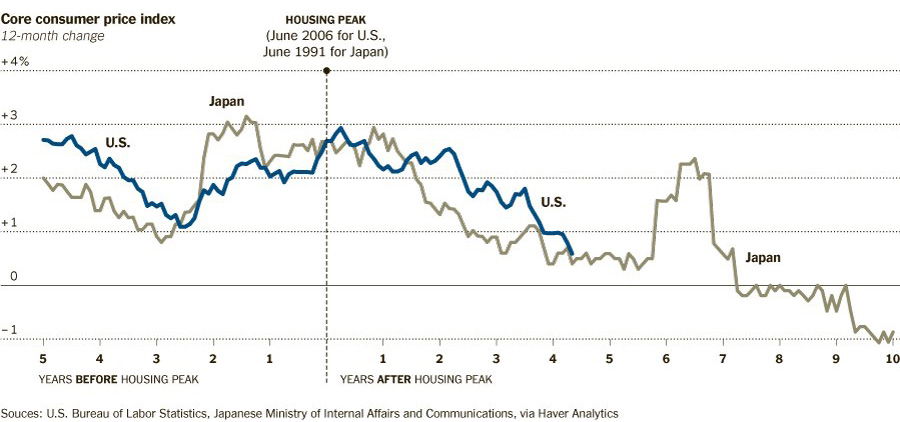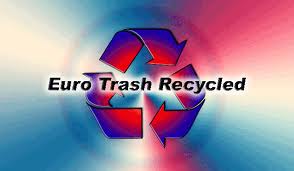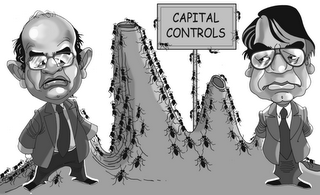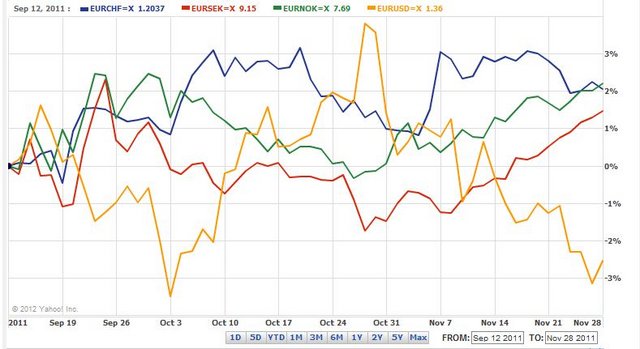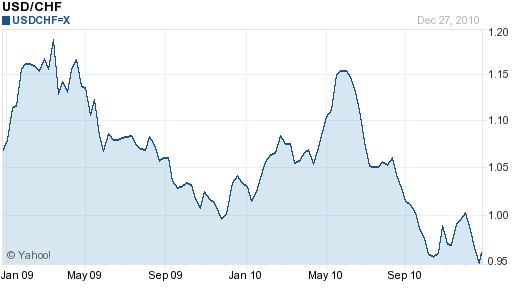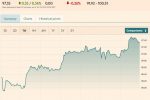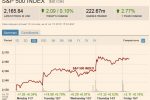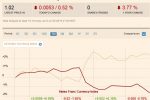Tag Archive: Safe-haven
Annual Mine Supply of Gold: Does it Matter?
The topic of how much extractable gold is left in the world has become increasingly discussed within the last few years. This is because of increased focus on ‘peak gold’ and also a concern about remaining levels of unextracted gold reserves. Peak gold is a term referring to the phenomenon of annual gold mining supply peaking (i.e. the rate of gold extraction increases until it peaks at maximum gold output and subsequently diminishes).
Read More »
Read More »
FX Weekly Review, July 25 – July 29: Dollar Hobbled; Technicals Warn of More Losses
The US dollar advance was stopped in its tracks by the
disappointingly weak Q2 GDP figures. The 1.2% annualized growth rate was
roughly half of the pace expected. The FOMC statement earlier in the week did not leave the impression that a September hike was likely, and with the poor growth numbers, the odds were downgraded
further.
Read More »
Read More »
FX Weekly Review, July 18 – July 22: Will the FOMC Halt the Dollar’s Advance?
The US dollar gained against all the major currencies over the past week. It also rose against many emerging market currencies. A notable exception was the Chinese yuan.
Read More »
Read More »
FX Weekly Review, July 11 – July 15: It is not About the Dollar, but About Other Currencies
Our weekly review of currency movements, with focus on the Swiss franc. This week: The US dollar is easily the most traded currency, and despite the plethora of other currencies, it is on one side of nearly 90% of all trades. Yet the movement in the foreign exchange market presently is not so much driven by the dollar as it is by other currencies.
Read More »
Read More »
FX Weekly Review, July 04 – July 08: Further SNB Interventions, Good Dollar Week
In the Brexit month, the Swiss franc index clearly underperformed the dollar index. The major reason is that the dollar is seen as a better safe-haven than the Swiss Franc, possibly because Swiss sales are affected more when British demand falls.
Read More »
Read More »
FX Weekly Review: June 27 – July 01: Swiss Franc Strength Reversed
Week after Brexit.: The Swiss franc (-0.3%) and the yen (-0.5%) were the worst performers, as so-called safe haven buying was reversed.
But the Swiss Franc index is still stronger in the last month than the dollar index.
Read More »
Read More »
SNB & CHF, the blog on a beleaguered central bank, its currency, on gold and astute investments
SNBCHF.com tracks Swiss macro-economic news and the Swiss National Bank. The SNB finally gave up the euro peg and agreed with the authors of this blog. Over years this blog expressed opposition against the EUR/CHF peg in about 900 different pages. They track the strong Swiss economic performance over these years. They explain all logical and fundamental Forex background why this peg did not have any reason to exist or, at least, why it was doomed...
Read More »
Read More »
(13.1) Is the Swedish Krona a Safe-Haven?
Arguments in favor of and against the Swedish Krona,as safe-haven during the euros crisis. Extracts from tradingfloor.com
Read More »
Read More »
Quantitative Easing, its Indicators and the Swiss Franc
The main drivers of demand for Swiss francs are the euro crisis and, even more, the behavior of American investors, who go out of the dollar in the fear of bad US economic data and/or Quantitative Easing (QE). Risk-friendly investors move into risky assets like stocks or currencies of emerging markets, while risk-averse investors fear inflation and buy inflation-resistant assets like Swiss francs.
Read More »
Read More »
The “Sell in May, Come Back in October” Effect and the 19 Fortune-Tellers of the FOMC
The U.S. economy regularly improves between October and April, this year additionally fueled by "unlimited" quantitative easing, weaker gas prices and higher competitiveness thanks to a stronger Chinese yuan and weaker Asian economies. Update 2013: The Case-Shiller index continued to climb in April 2013; it became clear that this year the "Sell in May" …
Read More »
Read More »
The “Get Stress in May and Relax in October Effect” for the SNB
The U.S. economy regularly improves between October and March. The SNB should use the moment to sell some currency reserves. From May on, the typical seasonal effects will push the SNB into a defense.
Read More »
Read More »
Quantitative Easing, Gold and the Swiss Franc
The main drivers of demand for Swiss francs are the euro crisis, but even more, the behavior of American investors, who go out of the dollar in the fear of further bad US economic data and of Quantitative Easing. This will push down the dollar, and safe-havens like the CHF, gold or the Japanese Yen up. … Continue reading »
Read More »
Read More »
The End of Swiss and Japanese Deflation
At a time of speculations about global deflation, we show an interesting and very different aspect. Our CPI and wage data comparison among different developed countries, shows that Switzerland and Japan will see both inflation, whereas other countries like Australia will see disinflation.
Read More »
Read More »
The “Sell in May, come back in October” effect and its equivalent for the SNB
The "Sell in May, come back in October" effect It is the same seasonal anomaly nearly every year: The statistically flawed (see here and here) Non-Farm Payrolls (NFP) report delivers some good winter readings with 200K new jobs, this time additionally fuelled by a weather effect; biased data that let hard-core Keynesian policy makers doubt Okun's law. Consequently the stock markets rally …
Read More »
Read More »
Huge rise in Currency Reserves: The SNB has restarted the printing press
The game for the Swiss National Bank seems to have changed completely. Again the central bank had increase money supply, as measured by deposits at the SNB by local banks and other sight deposits, this time even by 13219 mil. francs (source). This money printing implies that the SNB had to buy in Euros in …
Read More »
Read More »
Former SNB chief economist: Capital controls are just empty words
A former SNB chief economist says that capital controls are impossible, just empty words. In case of a Euro break-up the Swissie must rise together with USD, GBP and JPY An article, surprisingly from the usually left-wing Tagesanzeiger, more or less closely translated with some additional remarks.
Read More »
Read More »
Why is the Swiss safe-haven so completely different from the Yen ?
4 future scenarios for the Swiss franc and the Japanese yen For many people it is astonishing that the Swiss franc continuously rises against the euro, especially when markets are up. Is the CHF no safe-haven any more ? This year the Japanese yen has strongly fallen against the major currencies. Together with the upturn …
Read More »
Read More »
The new European Save-Havens: Trade SEK/CHF and NOK/CHF
After the announcement of the floor in the EUR/CHF pair, many predicted the Swedish and the Norwegian Krone to take the place of the Swiss Franc as European save-haven against the Euro turmoil (http://on.ft.com/pKSJ1V). Both countries possess a low level of debt, positive trade balance and very competitive economies.
Read More »
Read More »
Swiss Franc Surges to Record High (December 2010)
Dec. 29th 2010 Extracts from the history of the Swiss franc (December 2010) In the last two weeks, the Swiss Franc rose to record highs against not one, not two, but three major currencies: the US Dollar, Euro, and British Pound. The Franc is now entrenched well above parity against the Dollar, and is … Continue...
Read More »
Read More »
Swiss Franc in Spotlight (January 2009)
Jan. 29th 2009 Extracts from the history of the Swiss franc (January 2009). The Swiss Franc is in the same boat as the US Dollar and Japanese Yen, benefiting from an increase in risk aversion and an unwinding of carry trade positions. In other words, the currency rising on the back of the sound monetary … Continue reading...
Read More »
Read More »









